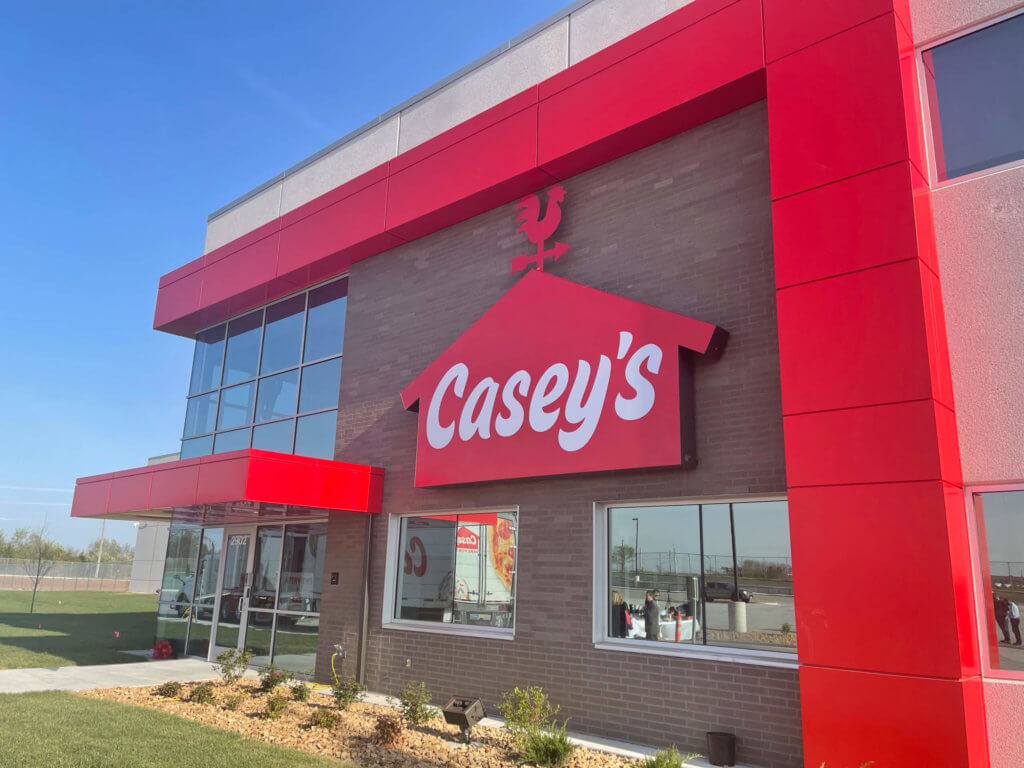Casey’s New Joplin Distribution Center Is Key to Its Supply Chain Efforts
- July 07, 2021

When Casey’s announced the opening of a new, state-of-the-art warehouse in Joplin, Missouri, everyone knew it was big news for the region and the state. After all, the announcement signified $62 million in investment and is expected to usher in the creation of 125 new jobs.
But one thing that wasn’t immediately obvious to anyone outside the Casey’s team was how important these types of distribution centers are to the success of Casey’s General Stores’ locations across the country.
Check out this excerpt from Forbes highlighting Casey’s supply chain strengths:
“During most of the pandemic, convenience stores were considered an essential business and were allowed to remain open. But Casey’s General Stores was, arguably, the most “essential” of all the convenience store chains. The company has traditionally located its stores in smaller towns and rural communities not served by national-chain convenience stores. Last year’s annual report disclosed that approximately 56% of all Casey’s Stores were opened in areas with populations of fewer than 5,000 people. As such, Casey’s provides a service generally not otherwise available in these communities.
Ena Williams, the chief operating officer at Casey’s, explained to me that their “stores have full kitchens, and they use fresh ingredients to make the pizzas – as well as salads and daily fresh donuts – from scratch.” Because of the kitchen, a typical Casey’s store is somewhat larger than many of their convenience store competitors. The average store is about 4,000 square feet.
The company could not effectively produce fresh prepared foods without self-distribution. Whereas many of their competitors’ source from wholesalers, Casey’s supplies their stores with groceries, food, health and beauty aids, and general merchandise from the distribution centers (DCs). The stores place orders for merchandise electronically to the Store Support Center in Ankeny, and the orders are filled with shipments in company owned and operated delivery trucks from one of the DCs.
The company views self-distribution as a competitive advantage. It gives them more control over their supply chain. It is easier to deliver what stores need, when they need it, with the ability to provide “hot shot” shipments if a store runs out low on inventory before the next shipment is scheduled.”
This expertise in supply chain management is only possible due to distribution centers like the one in Joplin. The new distribution center is expected to serve up to 600 stores and will reduce miles driven by approximately 1.8 million miles per year, and cut operating expenses by more than $400,000 per month.
Darren Rebelez, President and Chief Executive Officer at Casey’s said it best, “Every day at Casey’s, we are providing guests freshly prepared foods and the products they need and want. Our Joplin distribution team will play a key role in delivering on this promise. We appreciate the support from the state of Missouri and city of Joplin as we worked to make this project a reality. Casey’s Joplin Distribution Center is key to our plan for accelerated store growth over the next two years.”
So, the next time you visit one of Casey’s more than 2,200 convenience stores in the U.S., remember that they are made possible thanks to distribution centers like the one in Joplin, Missouri.
Check out the full article from Forbes here.
What Next?
- Talk to our CEO, Subash Alias, about business expansion opportunities at 314.932.3973 or via our contact form.
- Check out our available certified sites & buildings for your site selection needs.
- See how Missouri’s business climate ranks in comparison to other states in the U.S.
- Learn more about why Missouri is a top state for distribution and logistics investment and locations.